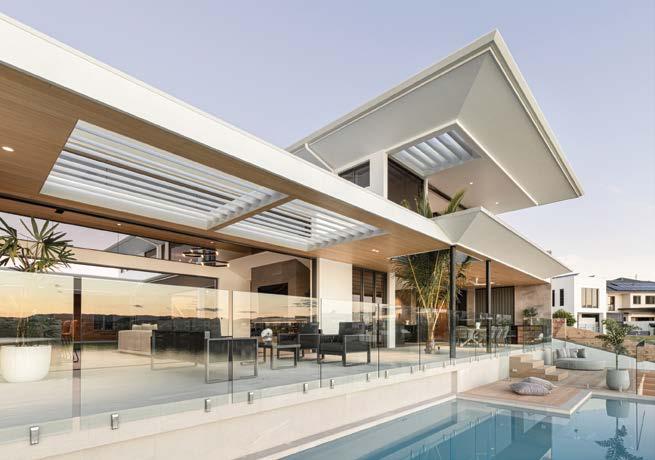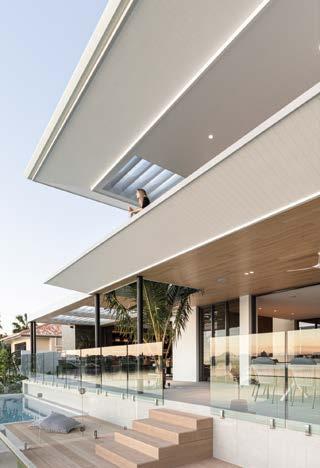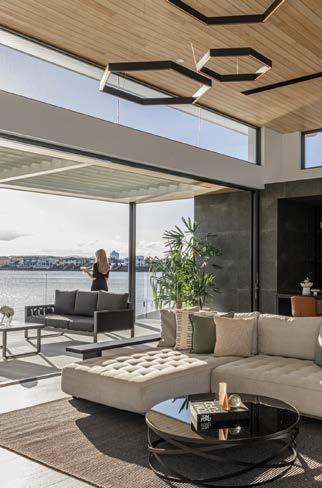
5 minute read
Post Pandemic Construction Boom
STATE OF PLAY, AUSTRALIA WIDE
Post Pandemic Construction Boom
Words: Slattery Images: Designer Reece Keil Building Design
Slattery provide insights into how the construction market is responding to Government stimulus and the post pandemic construction boom. What impact has opening up had across the construction market Australia wide?
The cost escalation forecast and what it means
With new and on-hold projects coming back after lockdowns and long periods of uncertainty, Slattery is predicting an average 4-5% escalation over the next two years across major markets. Smaller markets will continue to struggle to secure supply chains and sub- contractors, with Tasmania pushing the highest escalation at around 12-15%, Perth over 8% and Brisbane 6%.
The inability to attract labour resources and talent across all facets of the building industry will continue to put pressure on pricing. Increases in steel and copper prices, as well as timber shortages, will also have a big impact in driving costs upwards over the next 6-12 months.
2022 is looking to be an exceptionally busy year with a pipeline of government stimulus projects, international borders opening and overall developer confidence increasing.
Overview of the key impacts on the national market
Slattery have observed the following key impacts on materials:
• Plasterboard shortages are a challenge across the nation.
• Shipping container costs have increased to around $25,000 each with logistics issues likely to continue for another 12-18 months.
• Due to China’s hardline stance on COVID-19 shutdowns and border control, quality control continues to be an issue for overseas joinery and façade manufacturers. As a result, builders are seeking local alternatives for joinery which are likely to be higher in price because of the increased cost of labour.
• China is facing aluminium and power shortages which is expected to place upward pressure on impacted goods’.
• Steel (reinforcement, structural steel members and steel stud) prices are expected to increase again in December.
• Copper prices remain high impacting lighting, AV and cabling supply costs.

40%
Designer: Ibrahim Mustapha
Designer: Reece Keil

Quality of Facades – the impact of refurbishment and replacement
The 2019 BCA Update introduced higher performance requirements and as a result, facade costs are increasing. A lot of projects affected by this change are only now coming to market and the impact is in its infancy.
Not all sectors will be impacted in the same way. For example commercial office and university projects already have high-performance facades, so there will be some impact. However, there will be a bigger impact on ‘investor’ grade residential apartment projects that typically had single glazed laminated glazing units and now require double glazing throughout. The industry is now turning its attention to addressing embodied carbon, as both the electricity grid decarbonises and operational carbon decreases due to energy-efficient design. The Green Star Design and As-Built rating tool certifications end on 17 December 2021. The new Green Star Buildings rating tool will incorporate mandatory upfront embodied carbon reduction criteria. 4 Star and 5 Star certifications require at least a 10% reduction in the building’s upfront embodied carbon, and 6 Star certifications will require at least a 20% reduction.
These criteria will become even more stringent over the next 8 years. By 2030, all Green Star certified buildings will need to have at least a 40% reduction in a building’s upfront embodied carbon. NABERS and all levels of government are already looking to incorporate embodied carbon criteria into their RFT submissions.
Embodied carbon – impact on materials
The concrete industry is leading the way, offering several lower carbon concrete alternatives. Embodied carbon reduction is heavily reliant on concrete (based on Slattery’s carbon data, 30 – 50% of a building’s upfront embodied carbon sits within the structural frame).
Australian manufactured steel is still several years away from producing “green steel” and will rely on the progression/ investment in renewable energy and the phasing out of fossil fuel-powered blast furnaces. Lower carbon steel is available internationally (Europe, North America), however, the transportation emissions need to be factored into any embodied carbon measurements.
Cross Laminated Timber (CLT) is a popular choice for residential and commercial developers. If used instead of a reinforced concrete structure, it potentially reduces a project’s upfront embodied carbon by 35-40% (excluding sequestration). However, there continue to be supply chain issues with CLT.
Embodied carbon – the impact of ESG requirements and Green Star ratings.
Increased attention on embodied carbon
With Environmental Social Governance (ESG) requirements impacting commercial, health, and buildto-rent REITS – we are seeing a considerable increase in demand for the measurement of embodied carbon.










